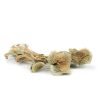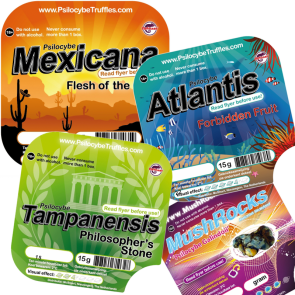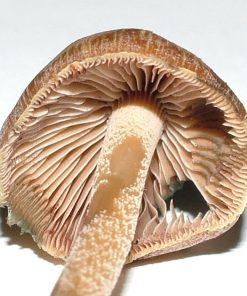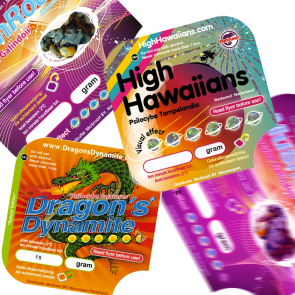Psilocybe Quebecensis
$200.00 – $1,100.00Price range: $200.00 through $1,100.00
Psilocybe Quebecensis | Where to buy Hallucinogenic Mushroom
Psilocybe Quebecensis is a little-studied mushroom that holds the title of northern-most Psilocybe species. It is usually found on woody debris in the Canadian province of Quebec, specifically on wash-outs from waterways and floods. The fruiting bodies are normally found alone or in small groups and have a few distinct characteristics.
This species readily bruises blue with age or handling and have translucent striations on the cap when wet. This bluing reaction extends to the stipe, where long “rhizomorphs” (root-like structures) are habitually found near the base. Older mushrooms may have a nearly flat cap that wrinkles with age. Fruiting tends to occur year after year in the same location, areas of discovery should be marked or noted.
While P. quebecensis has a moderate potency, containing both psilocybin and psilocybin, they must be cultivated in the wild. This species resists fruiting either mushrooms or sclerotia when cultivated artificially. They are found at the end of summer or into the autumn throughout its range, most recently extended into the state of Michigan in the USA. Their fruiting requires a low temperature shift, to near or below 6-15°C (43-59°F).
Though considered rare, this species is suspected to be more widespread, prevented by their small size, and low population density of Quebec. In the same range, other Psilocybe species share similar appearances, namely P. baeocystis and P. caerulipes, the latter being differentiated by a subtler blueing reaction. If discovered, they have a radish-like, floury scent and a mild, herbal, floury flavour.
An enigmatic species, P. quebecensis is hindered by its fickleness in artificial cultivation. For those lucky enough to discover a local patch, a yearly tradition can be expected if the place if remembered. A pleasing flavour and scent, and moderate potency, combine to make this sub-arctic species memorable.
Psilocybe Quebecensis
Psilocybe Quebecensis is a moderately active hallucinogenic mushroom in the section Aztecorum, having psilocybin and psilocybin as main active compounds. Native to Quebec, it is the most northern known psilocybin mushroom.[1] Macroscopically this mushroom somewhat resembles Psilocybe baeocystis.
Description
- Cap: 1–3 cm (0.39–1.18 in) (3.5 cm or 1.38 in) in diameter. Nearly hmispheric to convex at first, becoming subcampanulate to more or less plane when mature, viscid and even to translucent-striate when moist, hygrophanous, brownish to straw colored, yellowish to milk white when dry. Surface smooth, may become finely wrinkled with age, flesh whitish. Readily stains blue-green where injured.
- Gills: Adnate, thin, moderately broad to swollen in the middle. Grayish yellow with green tones becoming dark brown at maturity, with the edges remaining whitish.
- Spore Print: Dark purplish brown.
- Stipe: 2–3.5 cm (0.79–1.38 in) (4.5 cm or 1.77 in) long by 1–2 mm (0.039–0.079 in) (2.5 mm or 0.098 in) thick. Equal, slightly subbulbous, smooth to striate, brittle, tough, and fibrous, base is furnished with long conspicuous rhizomorphs. Yellowish or brownish towards the base, whitish when dry, partial veil cortinate, and soon disappearing, no annulus present, readily bruises blue.
- Taste: Somewhat farinaceous
- Odor: Farinaceous
- Microscopic features: Spores ellipsoid to subovoid in side and face view some spores mango shaped, 8.8–11 μm (16 μm) × 6.6–7.7 μm (8.8 μm). Basidia 15–20 μm (28 μm) 4-spored. Pleurocystidia present, 12–25 μm (35 μm) × (3 μm) 5–10 μm (15 μm), relatively polymorphic, often fusiform-ventricose or ampullaceous. Cheilocystidia (18 μm) 22–36 μm × 5.5–8.8 μm (10 μm), fusoid-ampullaceous with an extended neck, 2–3.3 μm thick, abundant, forming a sterile band, sometimes with a hyaline viscous drop at the apex.
| Quantity | OZ, 1/4 POUND, 1/2 POUND, POUND |
|---|
Reviews
There are no reviews yet.
Related products
Psilocybin Shrooms
Dried Magic Mushrooms
Dried Magic Mushrooms












Be the first to review “Psilocybe Quebecensis”